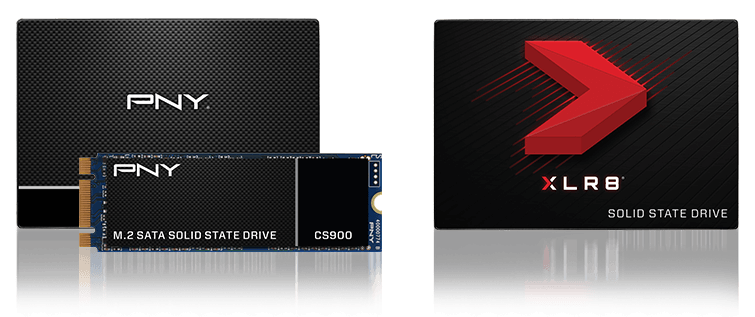FAQs
-
Q1
How to format your new Portable SSD?
Please follow below steps to format your new PSSD:- Connect PNY PSSD to PC
- Open Disk Management tool.
- Right-click on the PNY PSSD partition
- Select format type
- Select File System
- Allocation Unit Size.
- Select "Quick Format"
-
Q2
What is Percentage Lifetime Used
It is a measure of how much of the drive's projected lifetime has been used at any point in time. When the SSD is brand new, Attribute in SMART info Summary will show when its specified lifetime has been reached, it will show “0,” reporting that 100 percent of the lifetime has been used.
However, it's important to realize what it means to reach 100 percent of projected lifetime – it does not mean that the drive is going to fail when that counter rolls over to 101 percent, only that your SSD may need to be replaced soon.
The lifetime of a NAND-flash device is defined by another characteristic: data retention. Data retention is the amount of time that the device can safely store and allow successful retrieval of user data in an unpowered state. When an SSD or other NAND-flash device is brand new, its unpowered data retention will be several years. The endurance over the threshold will not cause all the data to disappear immediately but it will raise the risk of not able to retrieve the data after continuous use.
-
Q3
Do SSDs require defragging?
No, defragging an SSD will put undue wear and tear on the drive and potentially cause premature 'death' of your SSD. Because of the way SSDs work, not only does data not become fragmented, but running a defragmentation utility will actually burn through the program/erase cycles. -
Q4
What is the difference between SSD(Solid State Drive) and HDD(Hard Disk Drive)?
SSD data is stored in NAND flash, different from traditional HDD, SSD size is much smaller, with no moving mechanical parts, when running the SSD it’s silent, SSD is also much faster than HDD. -
Q5
I only have SATA I or II ports on my computer, will my SSD work?
All SSDs are compatible with SATA I or SATA II. However, the previous generation of SATA ports will not be as fast as the current generation. -
Q6
Do I need any special drivers when use PNY SSD?
No, PNY SSDs operate with standard drivers making it easy to plug into and work on most major operating systems, such as Windows and Mac OS. -
Q7
What operating systems are supported?
Each PNY SSD supports a wide range of operating systems unique to the target application. For more information, check the particular drive’s product brochure. -
Q8
What types of SSDs PNY has?
In Asia region, our SSD series products are all belong to consumer specification, including SATA SSD and PCIe SSDs.


DOWNLOADS
-
User Guides & Tutorials
-
Last Updated 19/09/2023
-
Last Updated 07/09/2023
-
-
Acronis Software
-
Last Updated 16/07/2019
-
-
Internal SSD Datasheet
-
Last Updated 23/10/2023
-
Last Updated 23/10/2023
-
Last Updated 24/02/2022
-
Last Updated 29/11/2022
-
Last Updated 07/09/2023
-
Last Updated 10/09/2021
-
Last Updated 08/12/2020
-
Last Updated 26/03/2021
-
Last Updated 24/10/2023
-
Last Updated 03/05/2021
-
Last Updated 03/05/2021
-
-
Portable SSD Datasheet
-
Last Updated 25/09/2019
-
Last Updated 25/09/2019
-
Last Updated 27/03/2023
-
-
Peripheral Datasheet
-
Last Updated 26/04/2022
-
-
Warranty
-
Last Updated 05/05/2021
-
- Applies to drives running the CS900208/CS900210/CS900211 firmware.
- Please be sure to backup or make copies of all important files, as updating firmware will erase the drive.











